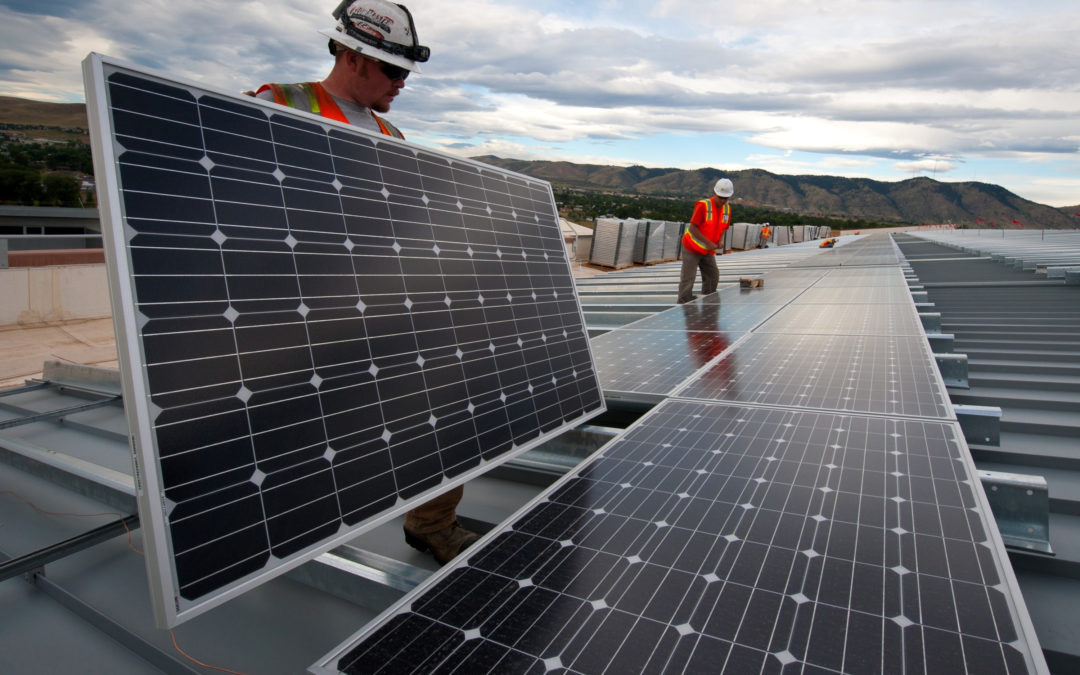Our previous blog post, “Why is the Cost of Solar Increasing?”, explored the forces behind recent solar price increases – including the Section 201 tariffs. The shadow of uncertainty cast by the Section 201 tariffs and the accompanying petition by Auxin Solar has resulted in an extremely volatile solar supply chain for the US. We have seen solar module price increases, Customs backlogs at shipping ports, material and project delays, and orders that ultimately cannot be fulfilled. These are affecting current and planned solar projects across the country and solar industry leaders are voicing their frustrations.
Pause in Tariffs
With the realization that price increases and project delays would jeopardize his goal of 100% clean electricity by 2035, President Biden issued a 24-month exemption for the Section 201 tariffs. It effectively waives importation duties for companies purchasing materials from the tariff restricted manufacturers. As such, any US company purchasing black-listed materials will not incur additional duties during the 24-month period or retroactively following its conclusion.
Unsurprisingly, one of the most vocal critics of the executive decision to waive the tariffs comes from Mamun Rashid, CEO of Auxin Solar, who originally filed the complaint with the Department of Commerce. Rashid says the President’s decision to be potentially unlawful, stating his actions would lead to the “defeat of fair application of U.S. trade law.” Others have said it will lead to a greater dependence on Chinese-owned solar manufacturers.
On the other hand, Abigail Ross Harper, President of SEIA, said the decision would ultimately benefit the solar industry with increased employment and an augmented domestic manufacturing base. Continuing to progress renewable energy deployment will get us closer to 100% clean electricity and support more localized energy generation.
Short- and Long-Term Effects
In the two months from when the petition made headlines in April 2022 to the tariff exemption announced in June, solar equipment prices and availability jolted to extremes making project planning extremely challenging. The uncertainty led to more conservative estimates and lower–risk decisions, and even pauses in planning to see where the situation would go. In July, we’re already seeing solar module prices beginning to decrease and high-demand products back in stock as the importation barriers break down. We expect further price drops and more PV material availability in the coming months, alleviating pinch points for many projects.
Over the long term, the renewed focus on building out domestic solar manufacturing will reinforce the US solar market. In June, President Biden authorized the use of the Defense Production Act to accelerate the domestic production of clean energy technologies, highlighting five critical technologies:
-
- Solar panel parts like photovoltaic modules and module components;
- Building insulation;
- Heat pumps, which heat and cool buildings super efficiently;
- Equipment for making and using clean electricity-generated fuels, including electrolyzers, fuel cells, and related platinum group metals; and
- Critical power grid infrastructure like transformers.
Sourcing the main components of a PV system domestically can help decrease transport times and costs, lower dependence on international suppliers, create local jobs, and improve the technical knowledge pool of the solar industry. Also, as more competitive suppliers enter the market, it can lead to a greater variety of options for consumers and more flexibility if the market does become volatile again. These benefits support long-term solar capacity growth and open the door to projects that previously may not have been viable without the increase in domestic production.
Investment in the Solar Industry
In parallel, private investment and solar manufacturing companies have recognized this potential in the market for many years. Back in 2019, Hanwha Q Cells opened the largest solar panel manufacturing factory in the Western Hemisphere in Dalton, GA with a 1.7 GW capacity. This nearly $200 million investment has the express purpose of serving the US market. Modules made at this facility fall under the Made in America designation and can be used in projects that have those requirements. Furthermore, after acquiring a 16.67% stake in REC Silicon for $160 million in January 2022, Hanwha is planning to acquire an additional 4.67% stake in the company as of March 2022. With a solar panel manufacturing facility in the US and now a significant stake in silicon production, Hanwha has demonstrated their commitment to continue making investments across the entire solar supply chain.
With the additional push from the federal government, private and public investment into the American solar market can bring significant solar projects to every sunny corner of the US. Confidence in the United States’ ability to meet domestic production expectations is growing – in mid-June, the US Solar Buyer Consortium opened a request for proposals for US manufacturers who could supply 7 gigawatts of solar panels a year, starting in 2024. This indicates that one, customers and solar EPCs are interested in procuring components made domestically, and two, they believe the American market has the capability to do so. Investment intentions like this one help spur other businesses to move quickly in this direction as well.
The 24-month exemption for the Section 201 tariffs helped the solar industry weather an extremely challenging supply chain environment and get back on track for clean energy deployment. However, this experience revealed the vulnerability of the American market and put a renewed focus on domestic manufacturing capability. Combined efforts to strengthen the solar industry will drive bigger projects in the future and increase renewable energy use across the United States. Soon enough, situations like these will be less disruptive to the overall market and the US energy grid will be more diverse, resilient, and green.

